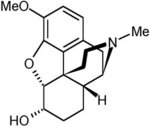You routinely administer combination drugs...but do you know what's in them? To find out, match each combination of ingredients in Section II with its correct name in Section I.
SECTION I
_____1. Synalgos-DC (Women First)
_____2. Analpram-HC (Ferndale)
_____3. Diovan HCT (Novartis)
_____4. Vicks DayQuil (Procter & Gamble)
_____5. Trivora-28 (Watson)
SECTION II
a. dihydrocodeine bitartrate, 16 mg; aspirin, 356.4 mg; caffeine, 30 mg
Prescribed for moderate to severe pain, this drug contains dihydrocodeine, an opioid analgesic; aspirin, a nonopioid analgesic; and caffeine to enhance their effects. Your patient may feel drowsy and dizzy while taking it.
b. dextromethorphan HBr, 10 mg; pseudoephedrine HCl, 30 mg; acetaminophen, 250 mg
The capsule form of this nonprescription cold medication contains dextromethorphan, a nonopioid cough suppressant; pseudoephedrine, a decongestant; and acetaminophen, an analgesic. Warn your patient not to take it with other products that contain analgesics, such as ibuprofen, naproxen, aspirin, or acetaminophen.
c. levonorgestrel, 0.05 mg, 0.075 mg, 0.125 mg; ethinyl estradiol, 0.03 mg, 0.04 mg
This oral contraceptive consists of four tablet types with different concentrations of levonorgestrel, a progestin, and ethinyl estradiol, an estrogen. Three simulate natural hormone levels and one is inert. If your patient smokes, urge her to quit to reduce her risk of thromboembolism and stroke.
d. valsartan, 80 mg, 160 mg; hydrochlorothiazide, 12.5 mg, 25 mg
Prescribed to control hypertension, this combination contains valsartan, an angiotensin II antagonist, and hydrochlorothiazide, a thiazide diuretic. Warn your patient not to use salt substitutes that contain potassium, which could raise his blood potassium to a dangerous level.
e. hydrocortisone acetate, 2.5%; pramoxine HCl, 1% The primary care provider may prescribe this lotion to relieve inflammation and itching due to psoriasis. Hydrocortisone is a corticosteroid; pramoxine is a topical anesthetic. Tell your patient to shake the bottle well, apply a thin film of lotion to his skin, and add an occlusive dressing if his psoriasis is severe.
BY MARCY PORTNOFF GEVER, RPH, MED
Marcy Portnoff Gever is an independent pharmacist consultant and educator in Ringoes, N.J.
Copyright Springhouse Corporation Dec 2003
Provided by ProQuest Information and Learning Company. All rights Reserved



